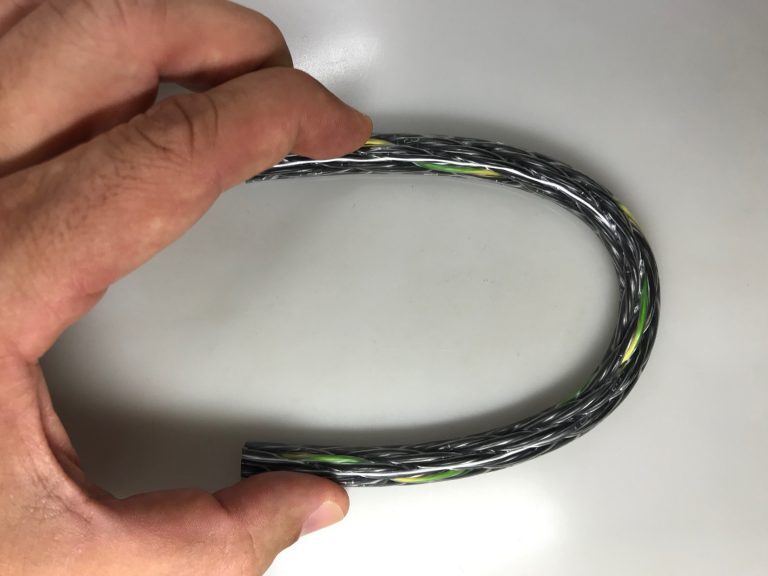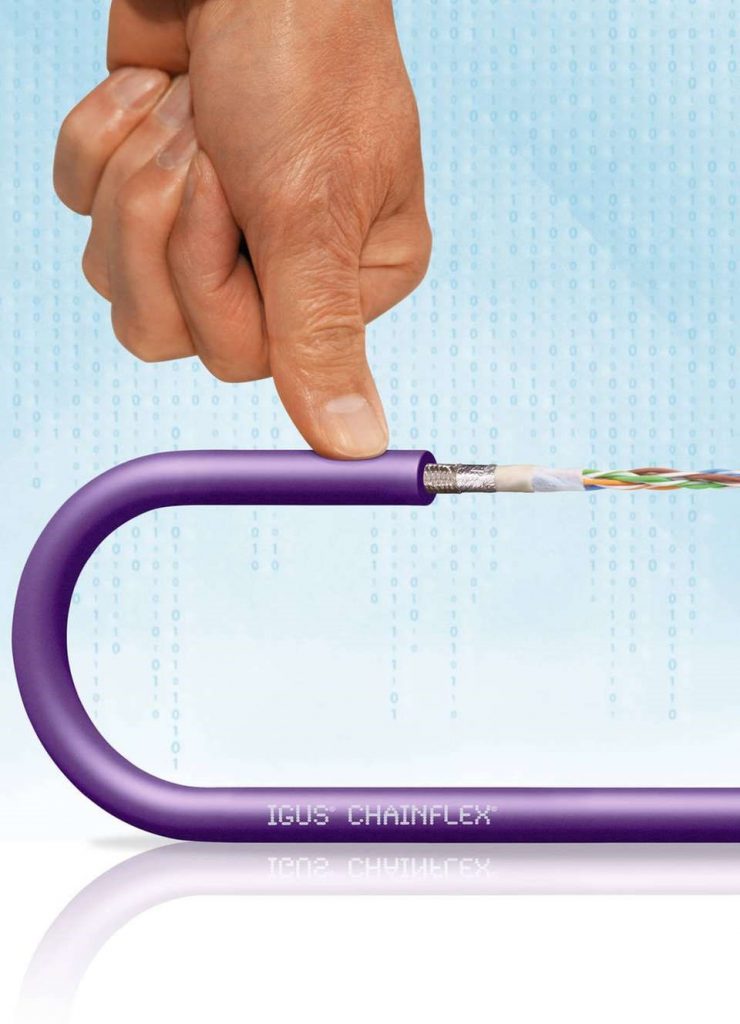No matter whether you call it energy chain,  e-chain® or a drag chain, it also does not matter whether cables have Flexible Dynamic (FD), highly flexible (HF) or “chain†in the name. It is not the name that matters, but rather the function and durability. So, which is best? A “hard†or a “soft†cable for use in energy chains? This question is often led by gut feeling. “Softer flexes well†or “harder might break fasterâ€. But what is actually right? Such a statement cannot be answered generally because it is a combination of various factors that influence the answer. Extremely soft cables are poor in dynamic applications because they can squeeze through the crossbars of the e-chain and rub, especially during demanding movement profiles. Extremely stiff cables are also bad because they can fracture. So, we have
to take a closer look. In principle, the selection of the right cable must always be considered for each application individually. Nevertheless, there are seven basic rules that have proven their worth when choosing the correct cable. We’ll now look at two of these basic rules. A key factor is the core structure, because it also affects the “hardness†of a cable. Stranding in bundles, for example, ensures a longer lifespan with continuous movement than other types of structure. In a braided structure, all cores move from the inner to the outer radius in the flexing cable several times over the same distance. This balances out tension and compression forces in the cable and offers stability. Cables without bundling (“layered†can also be used in the same applications but have proven not to last as long. When you handle a bundled cable design it is always a bit firmer than a layered design. That is actually the case. But this “hardness†of the cable offers the necessary durability in the end! The jacket material is another part of the 7 basic rules. This is because it also has a decisive impact on the hardness of a cable. Our TPE mixture is the hardest jacket material but – based on abrasion and permanent bending – achieved the best result in terms of durability in our laboratory tests. It is superior to all other materials in terms of abrasion and bending behaviour, achieving the tightest bend radii for high numbers of cycles Again, if you were to handle this, it would feel much worse for bending than say a PVC jacket, but again, the long service life at smallest radii prove the opposite. If the right design principles are used, a harder or stiffer cable in a moving application is likely more durable than a softer one. The machine application of course decides whether you also need this higher quality (length of service life). To determine the best mechanical property for you, we recommend our online chainflex® price check. Cat Travel Motor,Cat 390-1088,Travel Motor 3901088,Travel Motor Xuzhou MMT Machinery Co., Ltd. , https://www.mmtspareparts.comHard or soft cables?
7 basic rules for the right cable in flexing

Core structure

Jacket
material
Conclusion – hard or soft cable?
 hbspt.cta.load(3055426, '412256bc-f097-4b55-a3e7-ba13028d804b', {});
hbspt.cta.load(3055426, '412256bc-f097-4b55-a3e7-ba13028d804b', {});